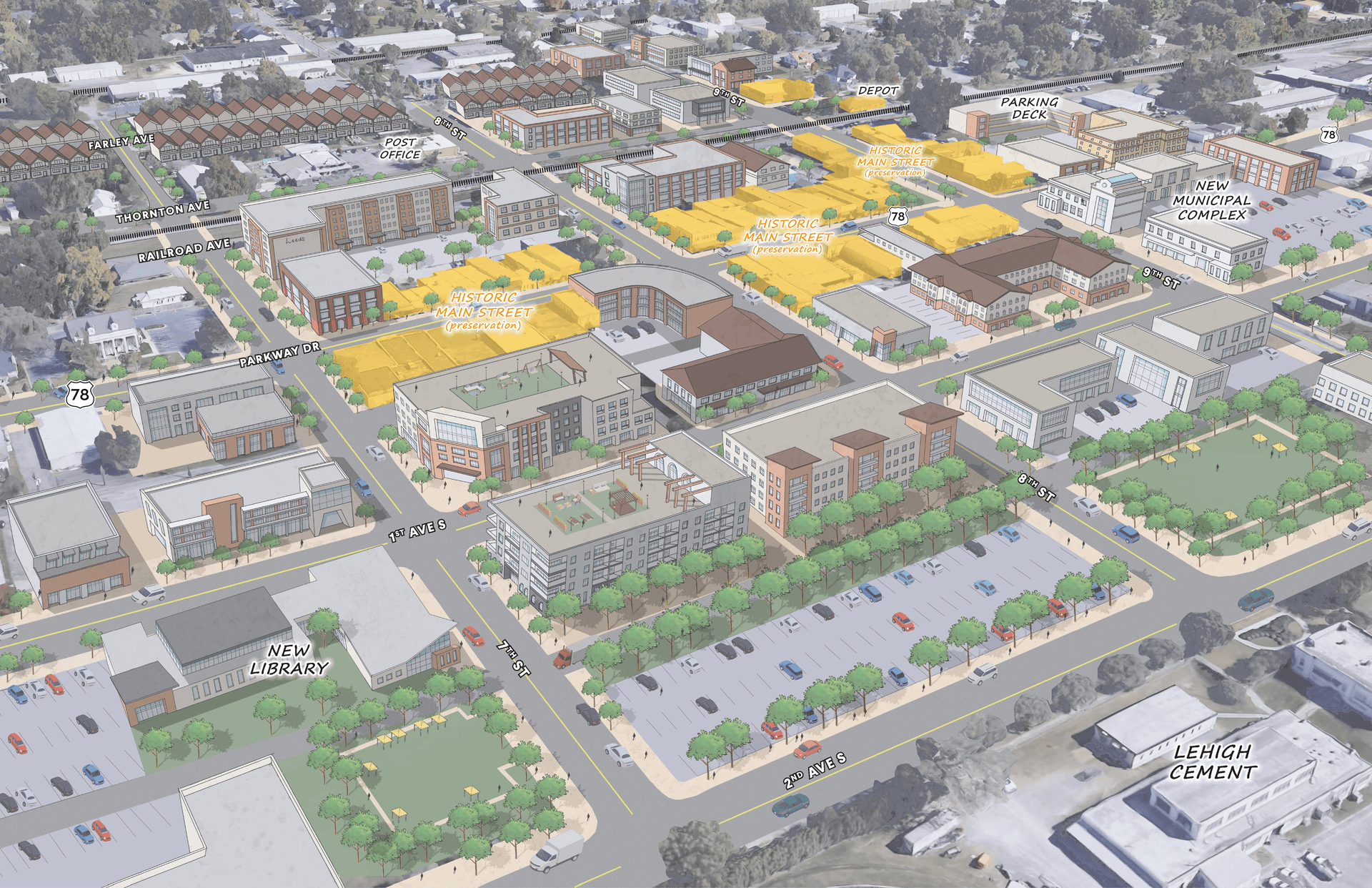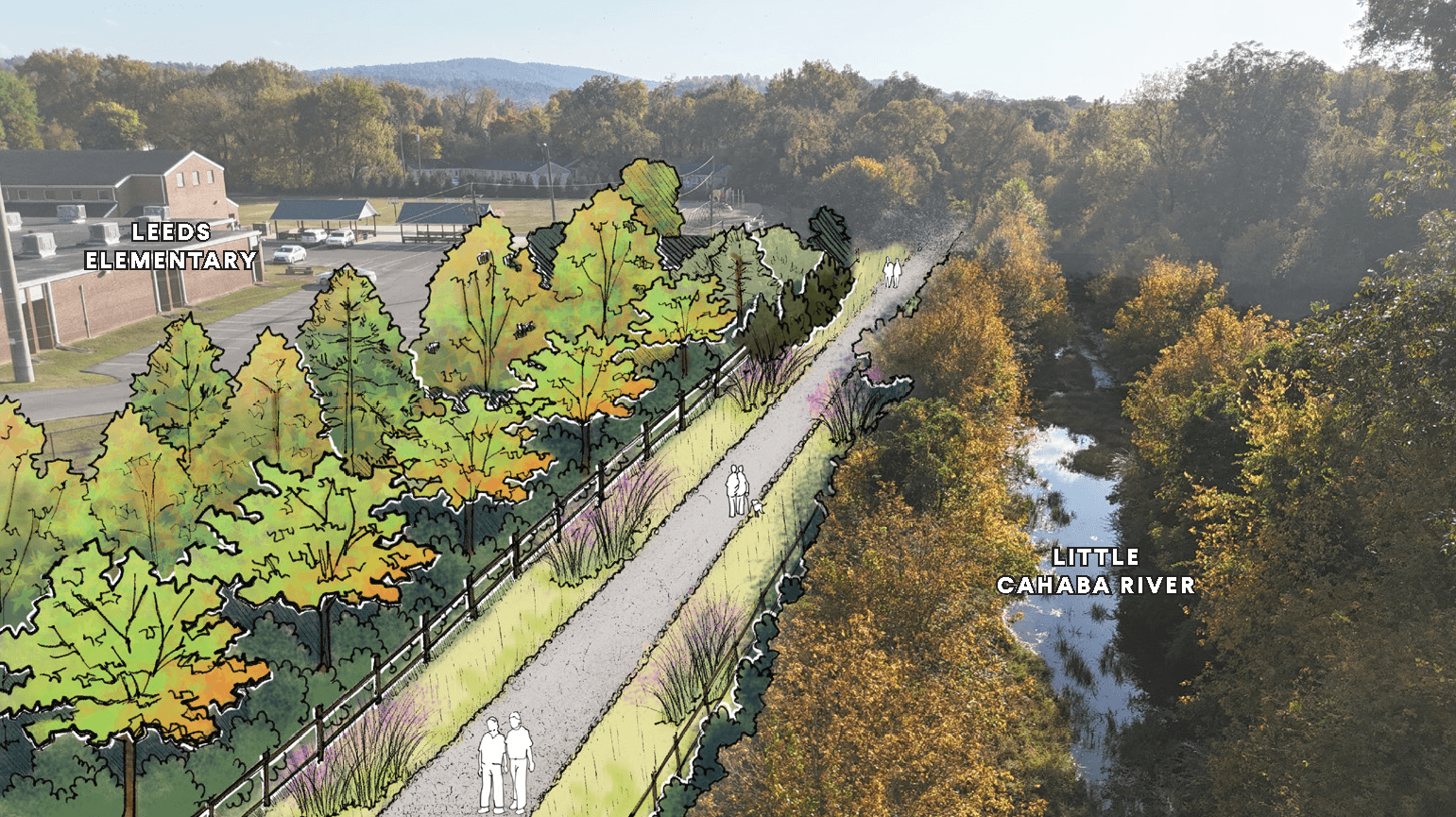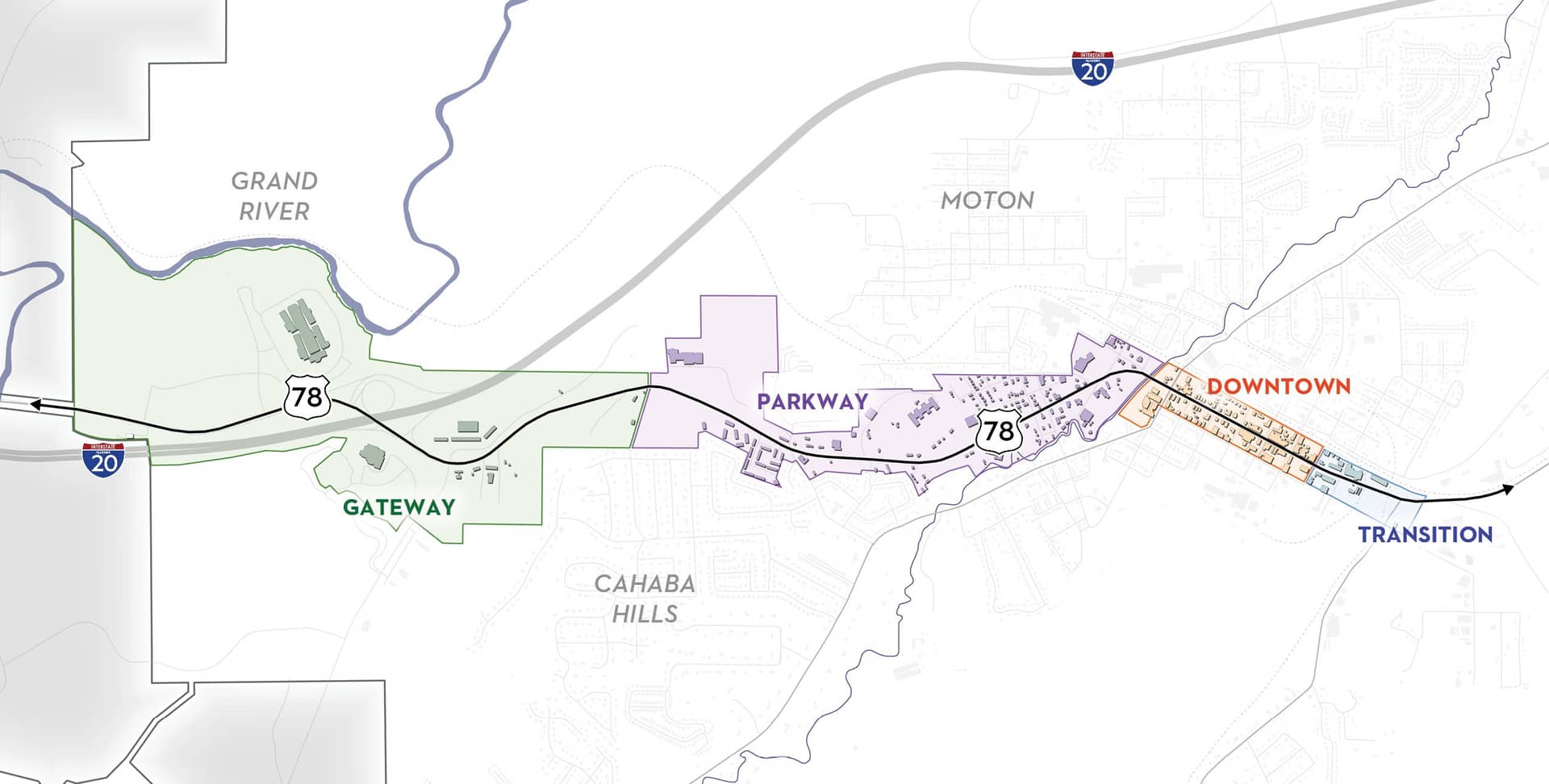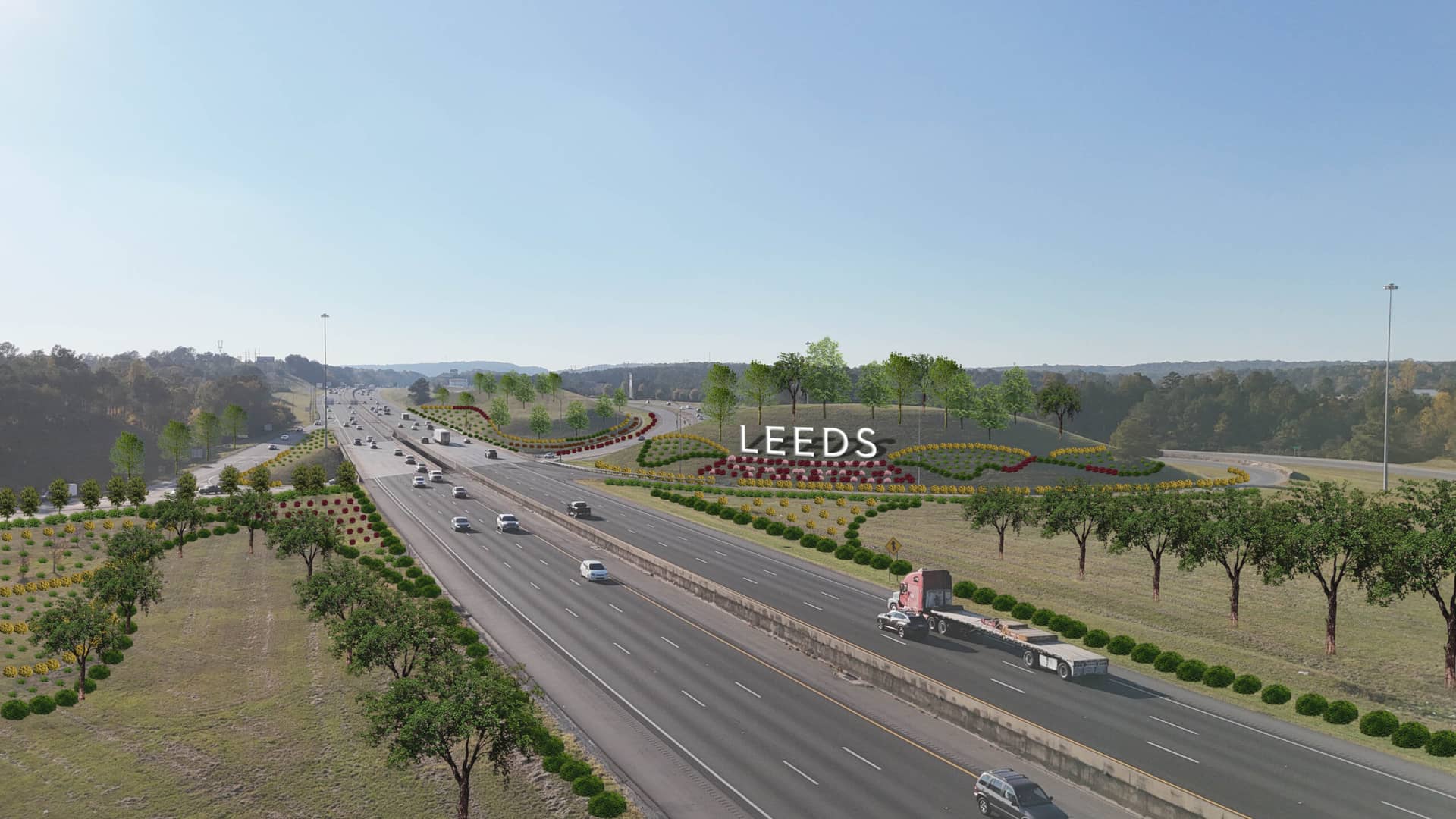
The City of Leeds is reimagining its future, focusing on growth, recreation, connectivity, and unity. To bring this vision to life, Leeds partnered with Goodwyn Mills Cawood (GMC) to develop the IMAGINE LEEDS comprehensive plan, rooted in community engagement and local expertise
This partnership between GMC, the regional planning commission, the city and residents developed an overarching vision of the community’s desired direction for development over the next 10-20 years. GMC supported fulfillment of the community’s vision by establishing a series of actionable goals and laying out an implementation plan, or road map, for how to make that vision a reality.
That community-driven vision emerged through a year-long planning process involving extensive community engagement. In addition, an online survey and dedicated project website allowed for ongoing input and transparency, ensuring everyone had a voice in the future of their city. Over 250 residents participated in the in-person and online activities collectively.
Throughout the public engagement campaign, four core priorities rose to the top: growth, recreation, connectivity, and unity. Each focus area includes specific goals, from business development and housing, to greenways and placemaking.

Growth is all about prioritizing smart growth, with an emphasis on housing diversity, economic development and enhanced infrastructure. The number one goal not only within the growth category, but the plan overall, is to develop Leeds’s downtown as a higher-density, mixed-use, walkable district. While the downtown area has a rich history and character, it lacks visibility and struggles to compete with commercial development along I-20. The city aims to change that by transforming the downtown area into a more vibrant, walkable, mixed-use destination with residential units integrated with retail, dining and recreational uses.
Beyond downtown, Leeds is also planning residential growth in the Grand River district – its busiest commercial hub, anchored by a shopping mall and the well-known Buc-ee’s. GMC’s planning team suggested integration of the planned Cahaba River Greenway with a recommended network of walkable neighborhoods that will connect future residents with outdoor recreational and commercial amenities. This greenway will also serve as a key link and primary corridor of Greater Birmingham’s Red Rock Trail System, a 750-mile regional trail network originally planned by GMC in 2010, with more than 130 miles now in place.

Recreation is also a large focus for Leeds residents and the comprehensive plan. As a family-oriented city, having accessible parks, spaces that promote exercise and activity as well as protecting natural environments for future generations, are of the utmost importance. This includes revitalizing existing parks, creating better connections through greenway trails and sidewalks and using park improvements as an anchor for neighborhood revitalizations.
One key recreational project recommended in the comprehensive plan is the creation of a greenway trail along the Little Cahaba River, inspired by the Shades Creek Greenway in Homewood. This would provide a better connection linking the city’s downtown and historic neighborhoods to its major parks along the Little Cahaba. Sports tourism is also a major focus of the plan’s recreational suggestions, including facility improvements at Memorial Park and the development of a new regional sports complex anchoring future development in Grand River.

Connectivity was another of the comprehensive plan’s core focus areas. Residents emphasized the need for safer, more efficient ways to move between neighborhoods, parks, schools, and shopping areas, all while preserving the charm of the city’s urban fabric.
Crucial to that aim are the plan’s recommendations to make it easier for people to get around town by walking or biking. Walkability and the art of good streetscapes play a major role in both the plan and the city’s overall livability, enhancing safety and sense of place. With this network of recommended projects for new roads, sidewalks, bike lanes and greenways, Leeds is poised to become a much more connected and walkable city. Additionally, biking has become more popular over recent years, but Leeds does not currently have the infrastructure to support those wanting to bike more regularly. The GMC team suggested incorporating protected cycling infrastructure in updated streetscapes along key corridors to achieve this goal.

Unity, the plan’s final focus, is meant to guide Leeds in developing a vibrant sense of place while strengthening historic preservation and community identity. One impactful way to do this is through placemaking and beautification. Enhancing gateways to the city and downtown with updated and cohesive landscaping and signage are important recommendations in the plan to beautify key areas and give the city a more welcoming impression. In addition, the promotion of public art, such as murals and sculptures, highlighting local artists, can add to the value of local districts.
Another way to unify Leeds is to upgrade municipal facilities such as the library and city hall, as well as modernize the city’s zoning based on the plan’s future character areas. Enhancing certain municipal facilities that are used daily by citizens would help create a dynamic community hub while providing versatile spaces. The plan’s proposed land use emphasizes 12 different character areas – each with its unique development styles and potential for future development.
As a result of this collaborative and community-driven effort, the City of Leeds is already bringing its vision to life. With the adoption of the master plan created by GMC, the city has taken major strides forward, breaking ground on a regional sports complex in Grand River and beginning enhancements at Leeds Memorial Park, including a new splash pad and playground.
These early projects reflect a broader commitment to thoughtful growth, improved recreation, stronger connectivity, and a unified sense of place. With residents at the heart of the planning process, Leeds isn’t just preparing for the future – it’s shaping it together.